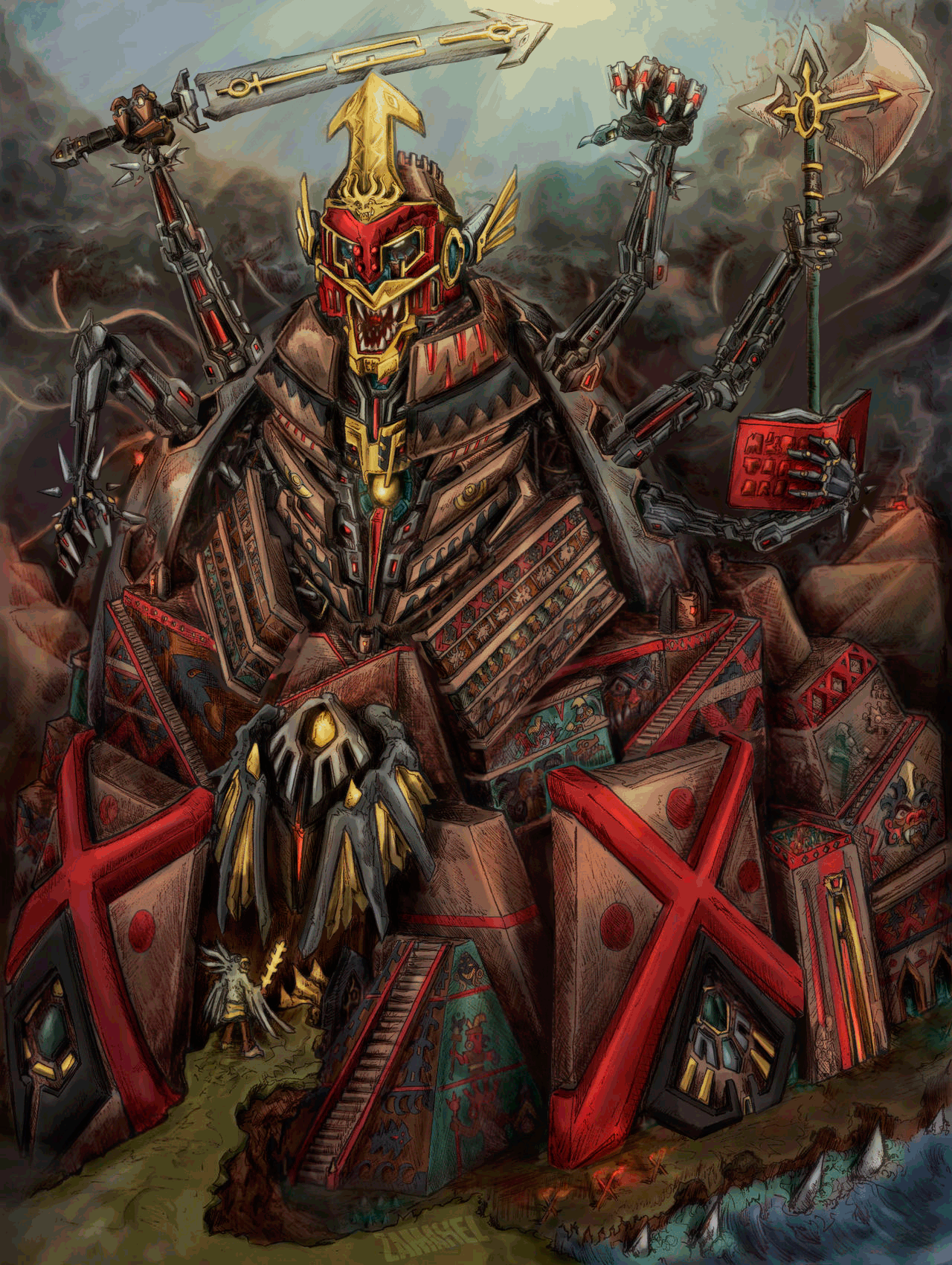HOME | DD
 itzamahel — Mictlantecuhtli
itzamahel — Mictlantecuhtli

#arte #artwork #aztec #character #characterdesign #conceptart #darkart #death #desenho #diadelosmuertos #dibujo #digitalart #drawing #gods #illustration #mesoamerican #mexican #mexicanculture #mexico #mictlan #mixedmedia #mythology #precolombino #skeleton #skull #underworld #precolumbian #aztecmythology #art
Published: 2023-07-06 15:59:02 +0000 UTC; Views: 2768; Favourites: 52; Downloads: 0
Redirect to original
Description
In Opochcalocan, the darkest chambers of Mictlán, the underworld, there stands Mictlantecuhtli, lord of the dead, and his wife, Mictecacihuatl, guardians of the bones of our ancestors.
Mictlantecuhtli ("Lord of the realm of the dead" in nahuatl) is a deity from the traditional cosmology of the Nahua people, indigenous to Central Mexico.
Mictlán is the location to where the Teyolia (one out of three vital energies of the body, according to traditional Nahua cosmology. The Teyolia is located in the Yollotl, "heart", it's the source of feelings and emotions. Other vital energies are the Tonalli, present in the brain and given by the couple of creative deities, and the Ihyiotl, breath, present in the liver. The Ihyiotl remains on earth after a person's death) of most people go after death, but there were other destinations depending on certain circumstances (victims of drowning ended up in Tlalocan, a watery place ruled by the rain god Tlaloc; stillborn children to Chichihuacuauhco the "wet-nurse tree"; women who died during childbirth or pregnancy to Cihuatlampa in the west, the place where the sun sets; warriors or victims of sacrifice went to either Huitztlampa in the south or Tlahuiztlampa, the east, place of sunrise, from where they'd follow the sun on its path - the ancient Nahua cosmology was geocentric).
According to traditional Nahua cosmology, some time after the fourth sun era ended and before the fifth (the current) began, the twin gods Quetzalcoatl (god of wind, culture and the Morning Star, the Feathered Serpent) and Xolotl (dog-like god of the Evening Star, associated with Itzcuintlán a region of the underworld inhabited by dogs) were sent by the other gods to steal the bones of the previous generation of gods (& ancestors) from Mictlantecuhtli. At first, Mictlantecuhtli tried to trick Quetzalcoatl by telling him he'd only allow him to take the bones if he played a song on a shell conch with no holes. Quetzalcoatl was helped by worms who made holes in the conch. Mictlantecuhtli allowed them to return, but as he controls the landscape of the underworld he caused earthquakes, and while he failed to block them, he caused Quetzalcoatl to drop the bones, which were scattered and broken by the fall.
The shattered bones were collected by Quetzalcoatl and Xolotl and then carried back to the land of the living. The bones were repaired with saliva of the Cihuacocoah (snake women, plural of Cihuacoatl - deities associated with midwives), and flesh was grown into them by the blood of Xolotl and Quetzalcoatl which they spilled from cuts they made in their reproductive organs. Then the gods transformed them into the various races of mortals who would next be brought to life when the fifth sun, Nanahuatzin / Tonatiuh, received further blood sacrifices from the other gods.
Several accounts about Mictlán's geography exist, some claiming it has nine different regions, not necessarily set as vertical levels. Mictlantecuhtli rules over the day sign of Itzcuintli (dog) and the group of thirteen days that start with Ce Tecpatl (1 Knife) in the Tonalpohualli, the Nahua version of the 260 days cycle Mesoamerican calendar, which decreed fates and astrology. He's also the fifth Lord of the Night, a group of nine gods associated with the hours of the night.
The reasons why Mictlantecuhtli would prevent the birth of a new generation of people and gods remain obscure, but this god of the underworld has a reputation for being greedy. Most likely influenced by other death deities from ancient Mesoamerica, Mictlantecuhtli has been depicted in many forms of art, on drawings, paintings and sculpture. He was particularly revered in the Miccaihuitontli & Huey Miccaihuitontli ("Great feast of the revered dead"), celebrations held in two of the 18 groups of 20 days months from the Xiuhpohualli (Nahua version of the 360+5 days cycle Mesoamerican calendar), originally celebrated from August 8th to September 16th, possible origin of the popular Día de los Muertos festivity in Mexico (pushed to All Saints Day in the colonial era). Mictecacihuatl, Mictlantecuhtli's wife, is the source of the syncretic "Santa Muerte", personification of death worshiped in Mexico to this day.
Mixed media illustration (ink drawing on paper from 2016 + digital painting from 2022) by Zamahel
Fully animated version minted and sold on the Tezos Blockchain


























